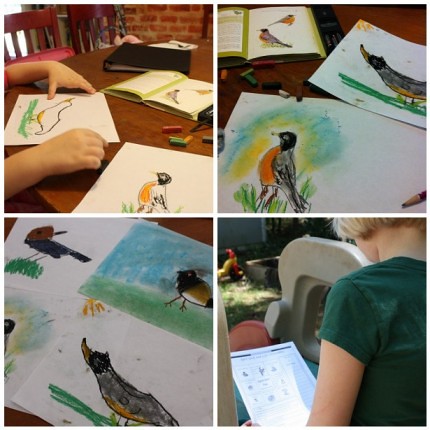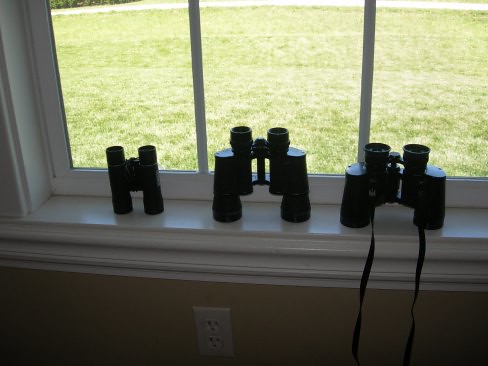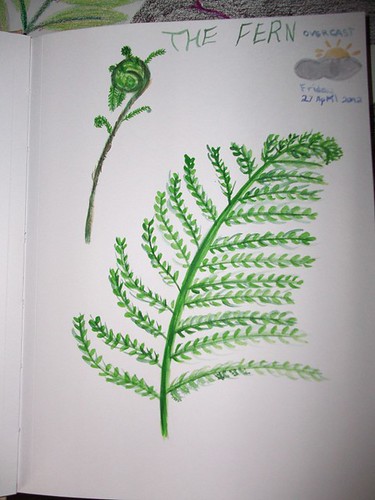
It has been a lot of fun for me to see spring come to all parts of the world through your Outdoor Hour Challenge blog entries as part of this carnival. So many of you have had an early spring which makes for a very green and colorful carnival.
Our family has enjoyed getting outside everyday as part the
Go Explore Nature photo scavenger hunt. Yes, even our family needs a little push to get outside sometimes and this project encouraged us to not only get outdoors but to notice things in a deeper way. I hope that the Outdoor Hour Challenge helps your family in the same way....there is evidence in this edition of the carnival that proves that you are indeed finding joy and learning right outside your back door. Thank you to all the participants this month and I look forward to seeing your May entries as we all get deeper into this Spring of 2012.
 Just a little note about the
Just a little note about the More Nature Study Book #4
for Summer Nature Study.
I am still writing and creating furiously in order to meet my May release deadline. I have found it necessary to push the release date to May 20, 2012. I wanted to keep you informed so you can plan your summer nature study using the Outdoor Hour Challenge.
Enjoy the carnival!
Spring Splendor
Denise from Grace and Truth is a fellow Californian (she is southern and I am northern) and she has put together a wonderful post to share their
Spring Splendor. Thank you so much Denise for sharing your nature journal entries..inspiring! Don't miss her beautiful images either.
Heidi from Starts at Eight would love for you to pop over and see their
Outdoor Hour Challenge #1 (which is really a Signs of Spring post). What lovely collages of their spring world she has put together for us all to enjoy!
Buds/Catkins/Blossoms
Angie from Petra School has submitted their
Spring Nature Study-Catkins entry for carnival readers. I'm sure we would all love to have been there for their study set in a gorgeous location with a magical place to complete our journals.
Barbara from Schoolhouse on the Prairie shares their
Buds, Catkins, and Blossoms on Our Spring Splendor Walk entry with the carnival. They made some important observations and followed up with journals that will remind them of their spring walk on the prairie. Don't miss reading her closing statement. :)
Kim from A Child's Garden wrote up their account of
Our March Bark Walk on the Nipmuck Trail. There are a lot of things to note in this entry but I what I noticed was how different her early spring woods look in Connecticut from what we see here in Northern California. Different trees, different colors...interesting to me.
Jen from Snowfall Academy has been conducting a tree study of a tree they can see from their apartment window (in France!). See their
Spring Tree Study entry and be inspired.
Spring Bird - Robins
Janet from Across the Page is sharing
Cornell Pilgrimage Part 2: Hawks for us to enjoy. I loved this entry and it inspired me to make our plans in the near future to visit Cornell Lab of Ornithology. Stay tuned for more information from Janet on the Cornell Lab in the May edition of the Handbook of Nature Study Newsletter.
Amy from Across the Page gathered several nature study sessions into her entry:
April Nature Notes. Her robin image is gorgeous and her girls followed up with some very carefully done nature notebook pages. She also shares a few of their images from their photo scavenger hunt from
Go Explore Nature.
Tricia from HodgePodge has put together a jam-packed entry with so much nature study goodness it makes my heart swell:
Spring is Full of So Many Things. Take a look at their robin study and follow-up Robin Patel artwork (shown above).
Barbara from Schoolhouse on the Prairie has submitted their
All About Birds entry for carnival readers to enjoy. I really loved seeing how birdwatching is a such a part of their everyday life. There is also a nice shout out to the Hodgepodge family...
Leslie from Two Cowgirls shares their
Farm School - Raptors entry with this edition of the carnival. You must click over and see their nest images and hear how they are incorporating interest driven learning.
Jen from Whimsical Blessings wants carnival readers to see their
Nature Study - Robins entry. Did you know that robins are the state bird of Michigan? She also includes their Signs of Spring Journals...excellent job!
Spring Flowers - Poppies, Buttercups, and More
Shirley Ann from Under an English Sky shares their
Dandelion Study with carnival readers. They had a wet day to complete their nature study which included observations, collecting, and journals. She has a printable Dandelion Notebook Page to share with you all. Enjoy!
Angie from Petra School wrote up their
Spring Flower Study-Learning the Parts study for us all to enjoy. What a beautiful visual entry! She has some images of their Forget-Me-Nots and up-close images that are going to inspire you to give your spring flowers a good inspection. Her boys have made wonderful nature journal entries too.
Here is an inspiring entry for those of you with younger children:
Nature Study with Spring Wildflowers from Jen at Whimsical Blessings. Their family uses a more formal science program during the winter and then nature study the rest of the year, building on interests and subjects that they have in their own backyard. They also incorporate nature study with their art time...perfect!
Rachel from All Things Bright and Beautiful shares their
Wildflowers Everywhere entry with carnival readers. They took a hike and captured some beauties! Rachel's daughter has also put together a blog entry all her own:
The Buttercup. Thanks so much for sharing your beautiful entry!
Dogwood Study
Amy from Hope is the Word has written and submitted their
Dogwood Tree Study. She says, "One of the toughest things I have to let go of as a homeschooling mother/tutor/teacher is that I will always have all of the answers." I think that is the lesson we all learn over time...hard to let go of it though. Thank you for submitting your dogwood study and showing examples of your nature journals.
Dogwood Nature Study and Chalk Pastels Sketches from the Hodgepodge family will inspire you to look more closely at your flowering trees (and maybe even follow up with an art project!). Make sure to see their beautiful dogwood blossoms.
Potpourri
Shirley Ann from Under an English Sky was surprised to find ferns for their
OHC - Fern Study in their neighborhood..in fact, their own backyard! She relates how this was a surprise to her and they now will be able to watch the fern throughout the year. They did an excellent job on their nature journals, capturing in great detail their fern study.
Annette from Life With the Grubb Worms has shared their
Outdoor Hour Challenge #1! Welcome to the OHC community and thanks for sharing your outdoor time with carnival readers.
Brandy from Half a Hundred Acre Wood wants to help you
Make a Botany Book. They started their Dogwood Study early and have included a tutorial and a free printable tree notebook page in their entry. She also has submitted their
Tree Study for you all to enjoy. Thanks Brandy.
Good Friday Garden and Choosing a Tree - Another great entry from the Hodgepodge Family. They are keeping up a family tradition while planting seeds and starting another tradition with their youngest and his personal tree study. Wonderful ideas.
Learning to Study Nature from Lisa at Looking At Life Creativlei is their account of the Spring Splendor Walk. They really saw some interesting things. I hope to see another entry from their family soon!
Amy from Barefoot in the Park has submitted their
Spring Green collage for carnival readers to enjoy.
Christy shares their
Spring Nature Walk and Fairy Houses entry from her blog Crafty Cristy. What a great setting for enjoying a little spring sunshine and creativity. They also had a whopper of a grasshopper visit this month and she shares her
Serendipitous Nature Study of a Grasshopper entry with the carnival. I love to see families find a subject and then pull out the
Handbook of Nature Study to learn more...excellent!
Bethany at Little Homeschool Blessings shares their latest addition:
The New Momma. Check out their little colt!

Don't forget to share your blog entries with the Outdoor Hour Challenge Blog Carnival. All entries done in May are eligible for the next edition. The deadline for entries is 5/30/12 and you can send them directly to me: harmonyfinearts@yahoo.com or submit them at the blog carnival site (link on the sidebar of my blog).
Also, the May Newsletter link will be in tomorrow's blog entry so make sure you are subscribed so you can download your copy as soon as possible. There are lots of great ideas for nature study, a new nature journal suggestion, and several articles contributed by Outdoor Hour Challenge participants.
 It was brought to my attention that the composer links for Schubert on page 20 of the ebook are no longer working.
It was brought to my attention that the composer links for Schubert on page 20 of the ebook are no longer working.











































